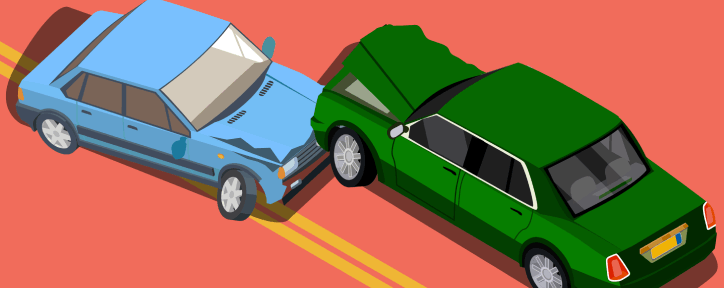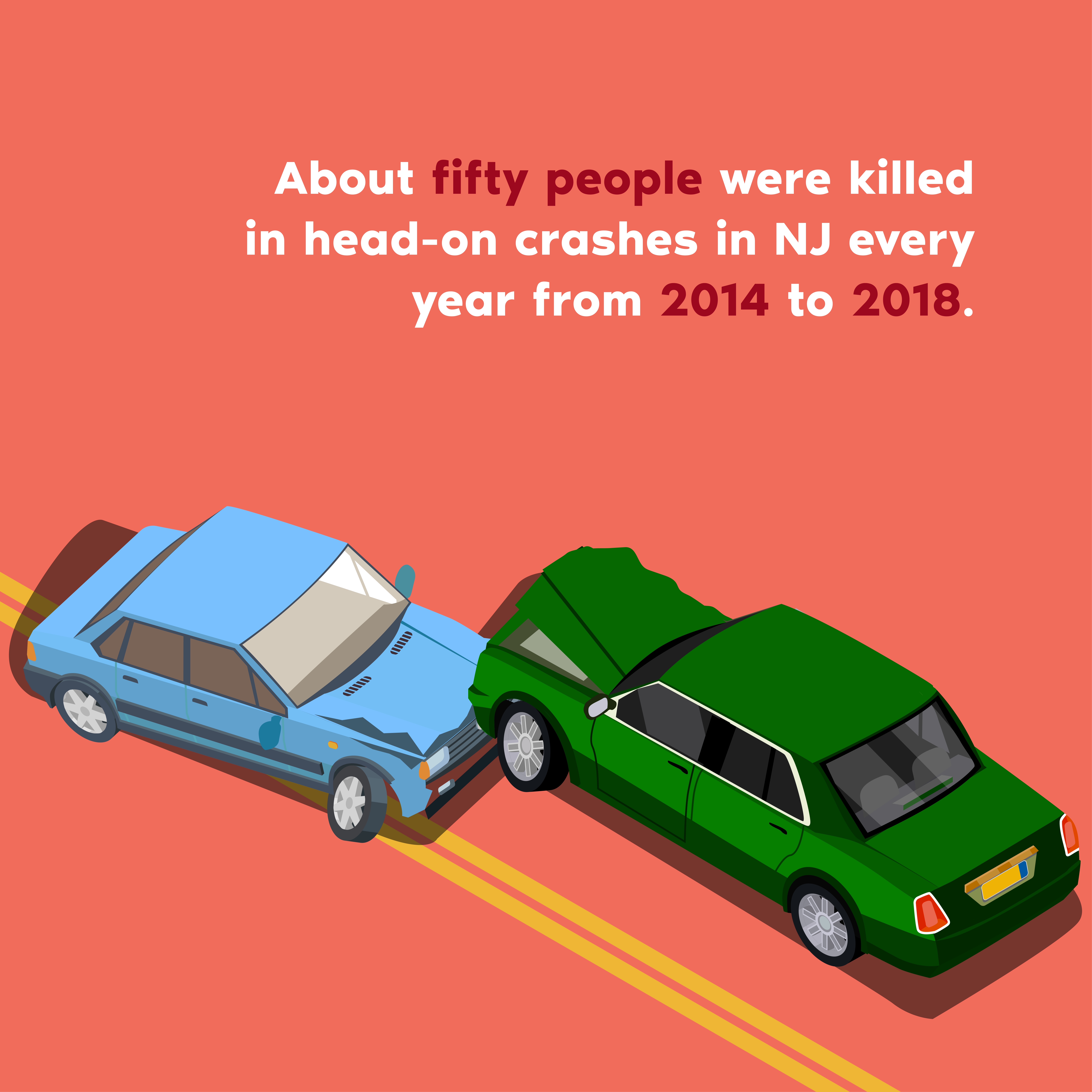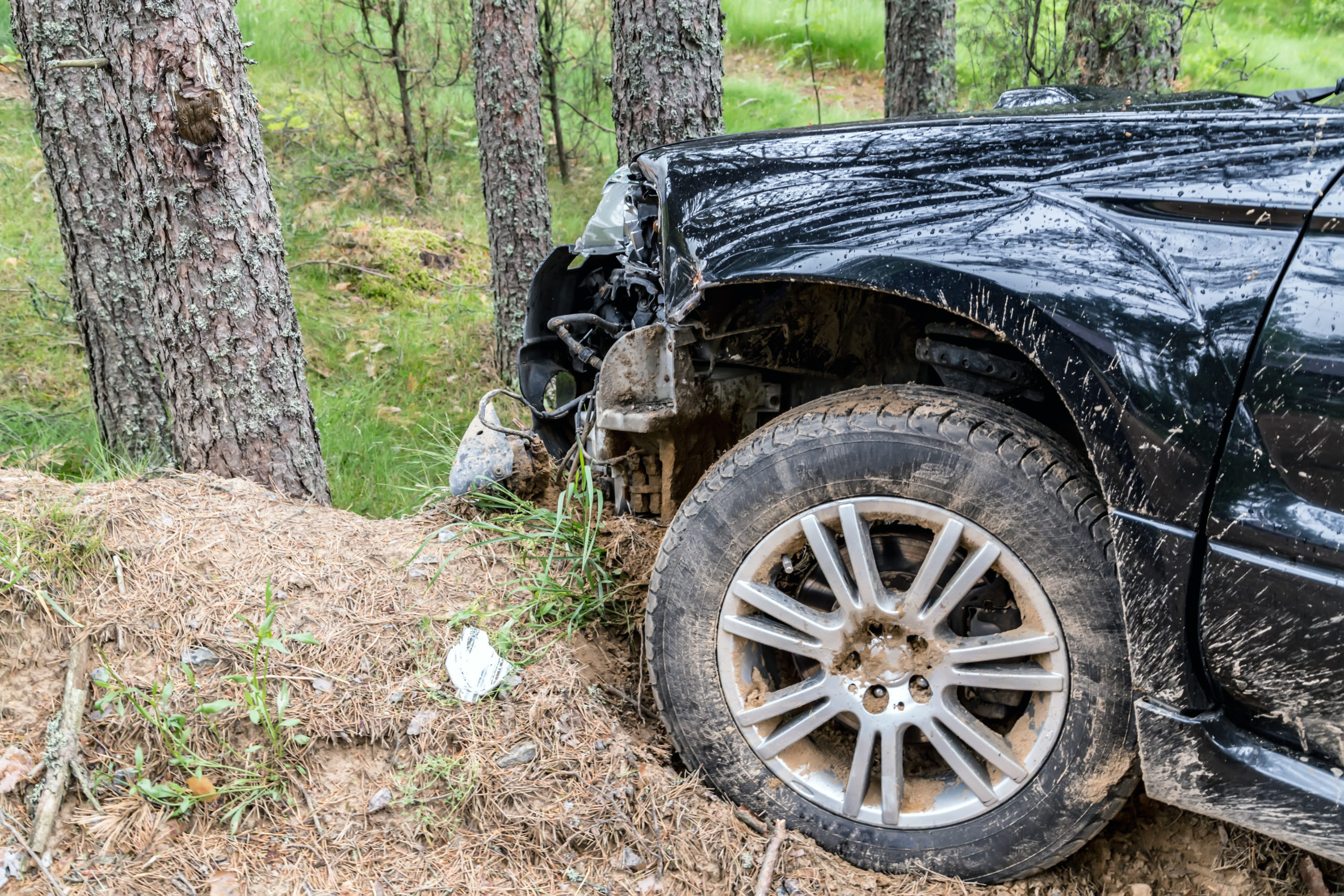
While head-on collisions are one of the least common crash types, they are nonetheless one of the most dangerous. Head-on collisions often involve far more force than other types of auto accidents, which leads to much greater injuries and higher rates of death. About fifty people were killed in head-on crashes in New Jersey every year from 2014 to 2018, according to statistics from the New Jersey State Police. Those who survive often suffer serious emotional trauma as well. For these reasons, anyone involved in a head-on collision should hire a personal injury attorney right away.
What Is a Head-on Collision?
When two vehicles traveling in the opposite directions collide, that is called a head-on accident. Keep in mind that the vehicles do not need to be directly opposite each other; in other words, as long as the front ends of both vehicles strike each other while heading in generally opposite directions (meaning there may be a slight angle to the impact), it would still be considered a head-on crash.
Causes of Head-on Accidents
One of the most common elements of a head-on collision is that one vehicle ends up in a lane going the wrong way. There a many ways this can happen, including:
- A driver is intoxicated
- A driver is fatigued or falls asleep
- A driver is distracted, possibly on the phone
- A driver passes another vehicle unsafely
- A driver swerves to avoid an unexpected obstruction
- Weather obscures the lane markers
- A driver enters a highway going in the wrong direction
A head-on collision can also occur as part of a multi-vehicle accident. For example, Car A sideswipes Car B. As a result, Car B swerves into oncoming traffic and collides head-on with Car C.

What Contributes to Severity?
The two largest factors in the severity of the crash are simply the size of the vehicles and the speeds at which they are traveling. The larger the vehicles involved and the higher the rate of speed, the worse the impact will be, likely causing significant injuries and even loss of life.
When two vehicles crash head-on, each vehicle often stops suddenly. Unfortunately, the occupants of the vehicles continue to move forward at the original speed of impact. If everyone is wearing a seat belt, then no one should be thrown from the vehicle. However, at even moderate speeds, the sudden impact against the seat belt can cause injuries, such as broken ribs or collar bones.
Even worse, any objects inside the vehicles that are not pinned down (e.g., cell phones, a purse, etc.) can end up rocketing around the interior of the vehicle with dangerous levels of force. This can lead to additional injuries, such as lacerations.
Potential Injuries
The raw force of most head-on collisions can cause injuries to almost any part of the body, depending on the circumstances. This includes:
- Cracked ribs or sternum from the impact against the seatbelt
- Broken wrists or arms from the impact against the steering wheel
- Broken feet, ankles, or legs
- Whiplash and other neck injuries
- Concussions and other brain injuries from the sudden stop
- Minor to severe lacerations from broken windshield glass
- Damage to internal organs
Level of Fatality
Despite accounting for only 2% of auto accidents, head-on collisions are responsible for 10% of total vehicle-related deaths. Moreover, 57% of fatal crashes nationwide are head-on collisions. Data from the NJ Department of Transportation finds that head-on collisions account for 1.6% of accidents (excluding interstate crashes, which are not broken down by crash type).
Determining Fault
One of the biggest questions to ask when determining liability in a head-on collision is which driver was going the wrong way? Keep in mind, this may not always be clear, such as in the case when two cars collide head-on in a parking lot. However, on roadways with clearly marked lanes and directions, the answer to this question may be quite clear.
Another question to consider is how did the vehicle end up there? A driver who ends up in oncoming traffic because he/she was drunk is more damning than if the driver swerved to avoid a child who had run into the street after a soccer ball.
If a driver ended up in the wrong lane because they skidded on ice, whichever city or county was responsible for maintaining the road might also be liable. In Meta v. Cherry Hill Township, a woman was seriously injured after a patch of ice on a narrow bridge caused her car to skid into oncoming traffic. The court allowed her claim against the township responsible for the bridge to proceed because the township knew that the bridge tended to ice over but did not put up a sign to warn drivers. However, these claims are ordinarily difficult to make: the city or county must know about the danger and fail to warn drivers about it.
The third key question is how did the other driver—the one that was theoretically in the correct lane—respond? Did he/she have enough time to slow down or switch lanes? Was there anything he/she could have done to avoid the accident?
These are not the only questions an attorney might ask in such cases. However, the answers to them provide a critical starting point to determining who is at fault and to what extent, both of which can affect the outcome of a personal injury claim.
In rare instances, a vehicle defect could make the manufacturer liable. For example, in 2009, a series of accidents were caused by Toyota accelerators getting stuck, causing drivers to lose control of their vehicles. Note that this does not always absolve one or more drivers from liability. An attorney well versed in personal injury and product liability law can determine which parties should be held liable.
Filing a Claim
Calling 911 to get the assistance of police and emergency medical services should be the top priority in any head-on collision. After that, when possible, a person should attempt to document the accident, including taking photos of the vehicles and exchanging contact information with the other driver, passengers, and any witnesses. This information will be critical for anyone who needs to file a personal injury lawsuit related to the accident.
A person who is hurt in an accident could be entitled to damages–this is a legal term for money owed to compensate for economic and non-economic losses. Economic losses would include medical bills (both past and future), vehicle replacement, lost wages (from missed work and/or for a reduction in earning power due to reduced capacity), and any other costs not covered by insurance.
Non-economic losses refer to pain and suffering–both physical and emotional. It’s important to note that whether a person can get compensation for non-economic damage depends on the severity of the injury and the person’s car insurance policy.
If a person selected a policy with a limit on lawsuit option, they can only get compensation for non-economic losses if they suffered a permanent injury. Permanent injuries include death, loss of a limb, paralysis, permanent scars, and a few other things. For example, in Jordan v. Thaker, a driver was allowed to sue another driver who collided with his car head-on because the accident left him with an inch-long visible scar above his eyebrow.
Another factor pertaining to claims is that New Jersey uses a comparative fault model for personal injury awards. That means a driver can have his/her award reduced by the proportion that the driver is deemed at fault. Moreover, the driver can only receive compensation if he/she is found to be less than 50% at fault for the accident.
Filing a personal injury claim is no simple matter, even when both the injuries and the liability of the other party are clear. Therefore, it is critical to hire a skilled personal injury attorney who can ensure a fair and adequate level of compensation.

Case Study: $21 Million Award
What makes this case unique: Defense witness testified in favor of plaintiff; judge was a former Attorney General who had lost a substantial case to Mr. Rosenblum years earlier; Appellate Court actually increased the award amount.
Frequently Asked Questions
If it seems a head-on crash is imminent, a driver should immediately slow down and, if possible, move to the right. (One can move to the left if that doesn’t take the vehicle into oncoming traffic.) If there is no way to escape the lane and avoid the crash, slowing down can reduce the force of the crash and improves odds of survival.
The question of who is at fault in a head-on collision or any other auto accident depends heavily on the circumstances of the crash itself. In New Jersey, it is common for both drivers to bear some responsibility. A driver who is less than 50% at fault can sue the other party for damages.
The odds of surviving a head-on collision depend on many factors, but speed is one of the strongest factors. One study shows that chances of survival decrease dramatically if one or both cars are traveling above 43 miles per hour.
Who Should I Contact if I’m Injured in a Head-on Collision?
Head-on collisions are serious matters. Even if injuries are not apparent right away, they can manifest later and affect the rest of one’s life. If you or someone you love has been injured in an auto accident, contact Rosenblum Law today. Our experienced team of aggressive New Jersey personal injury lawyers has a record of recoveries in all types of NJ personal injury cases. E-mail or call 888-815-3649 for a free consultation.







 888-815-3649
888-815-3649
